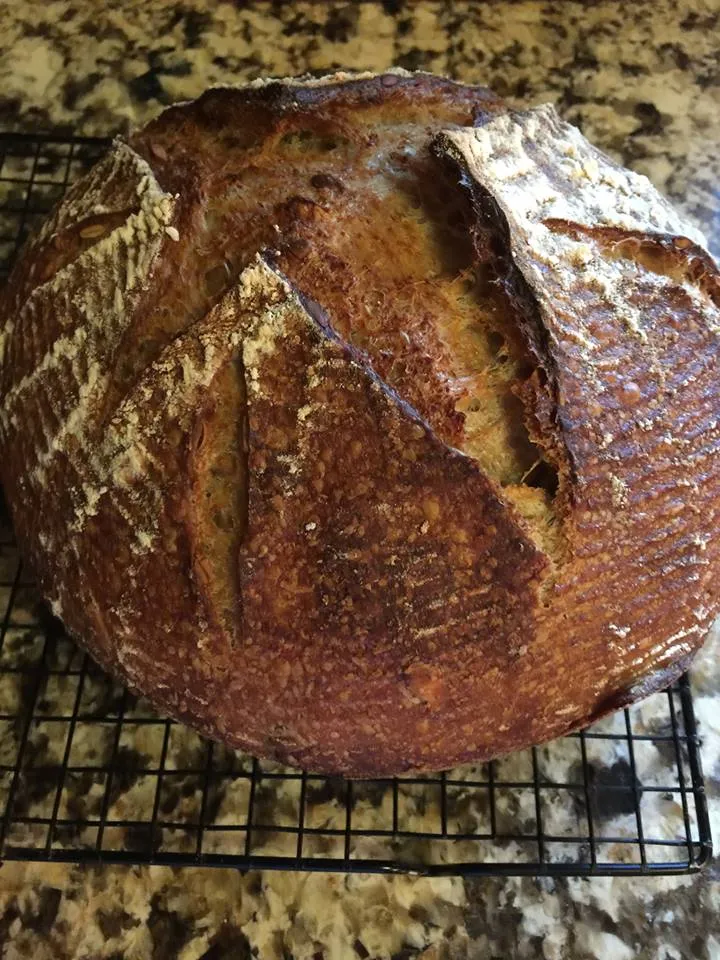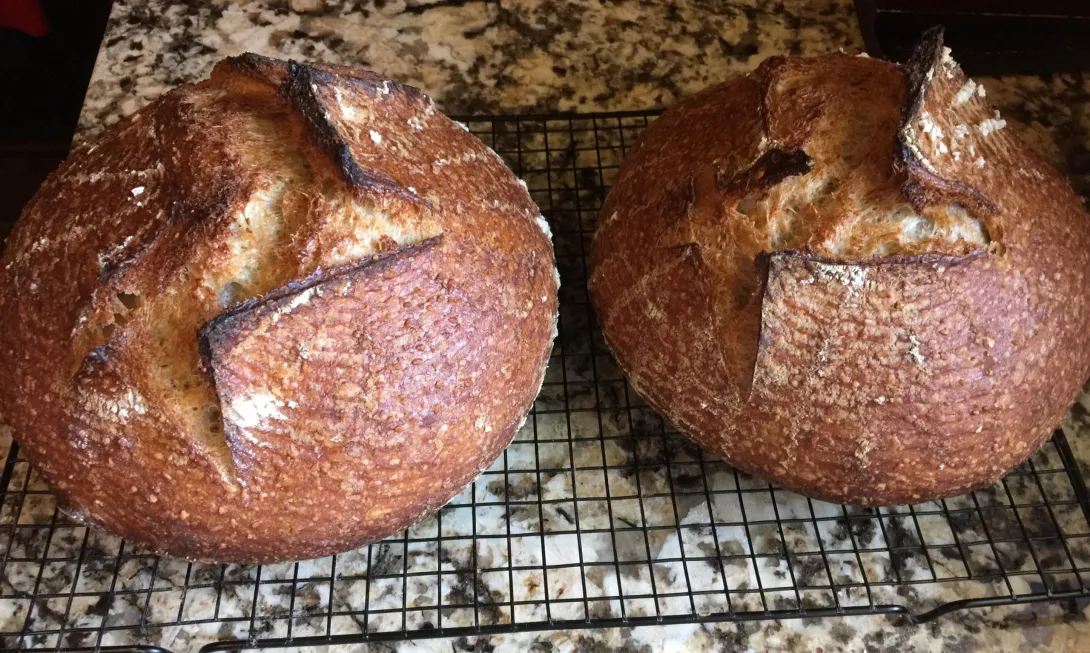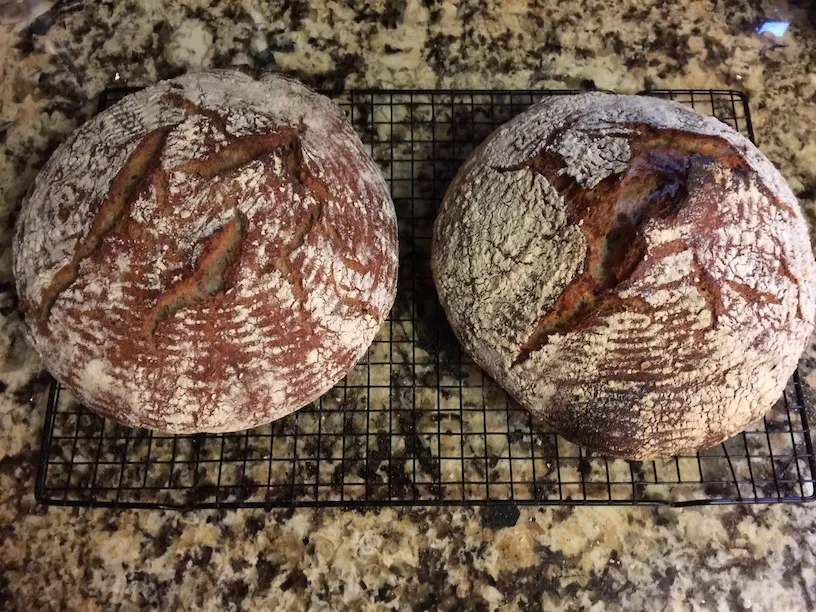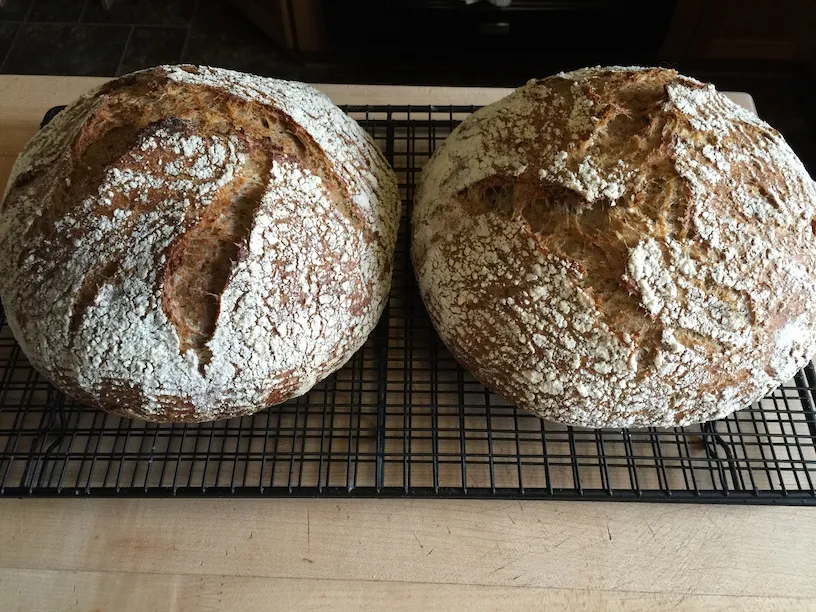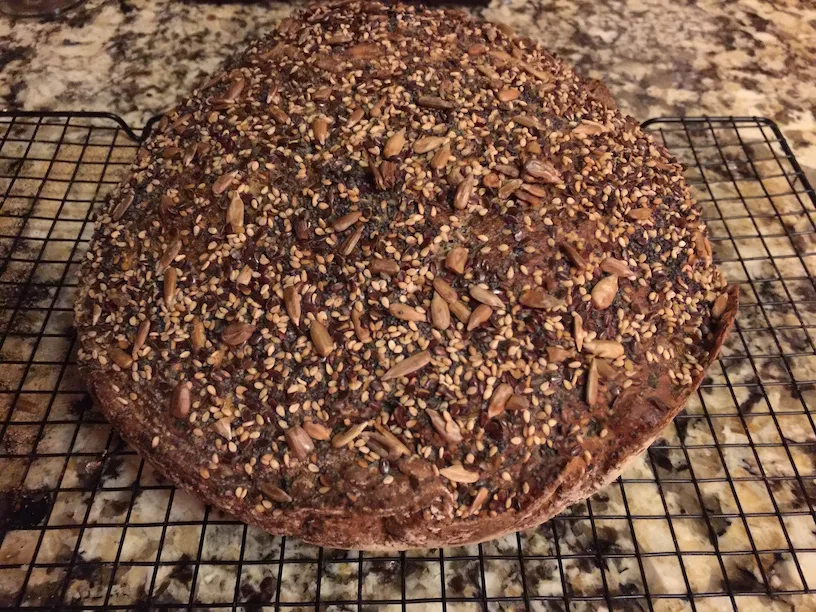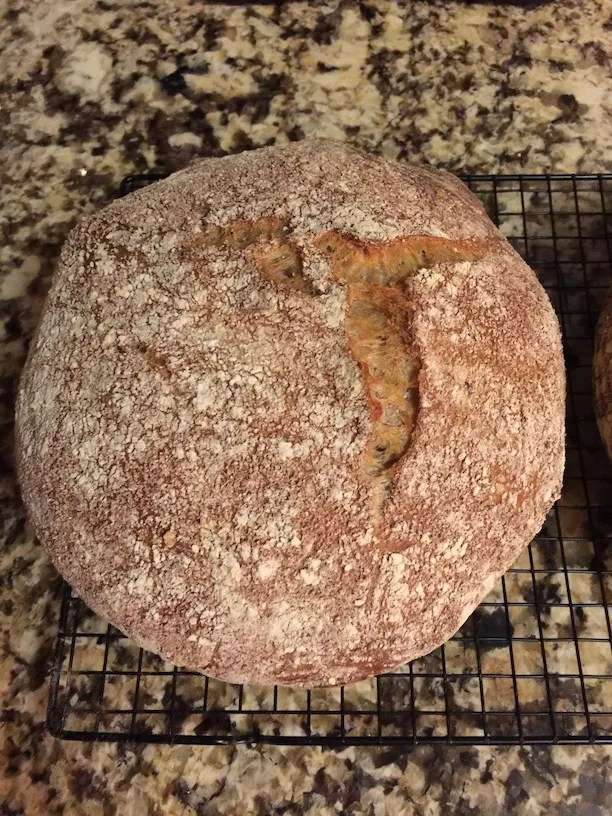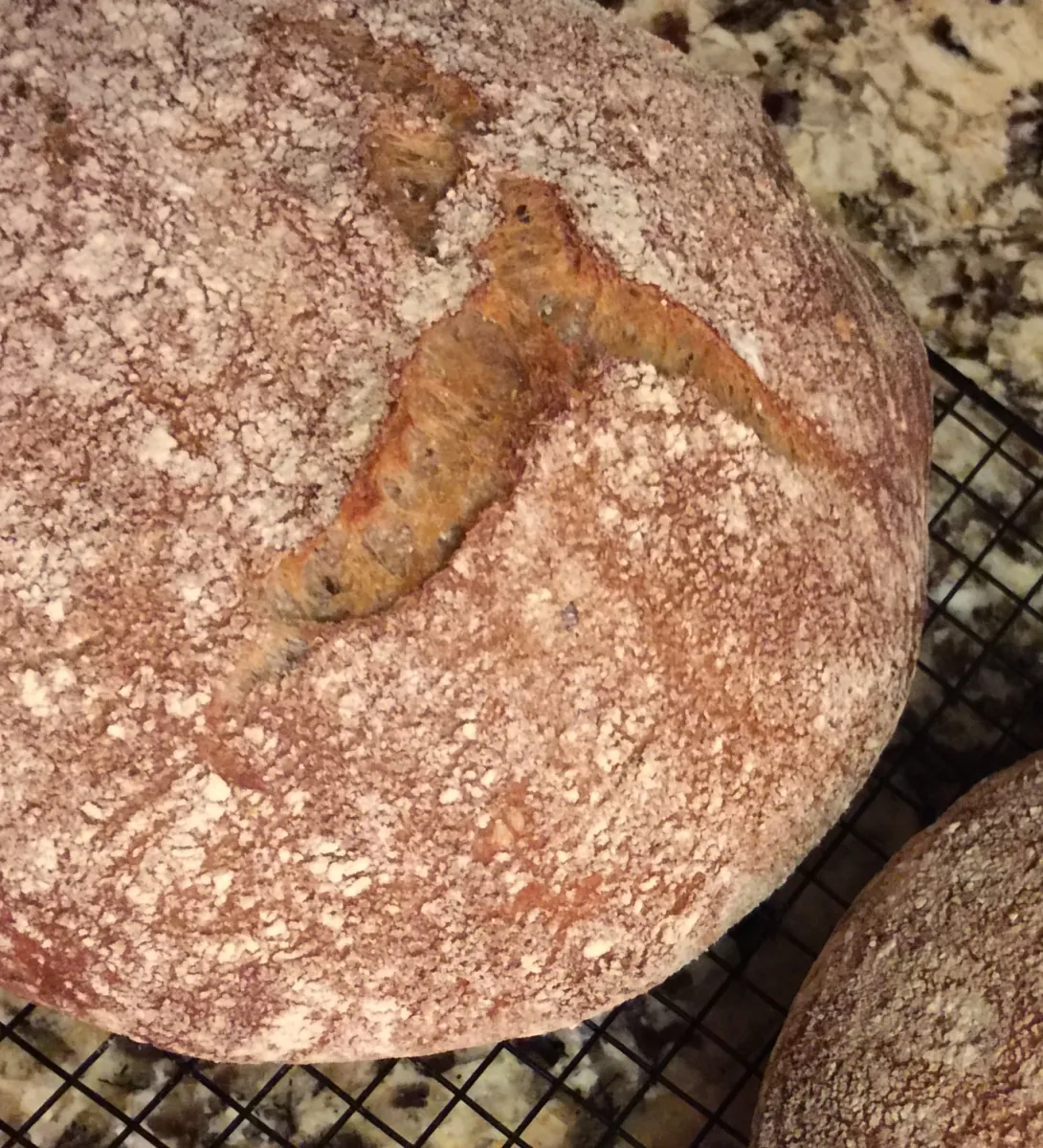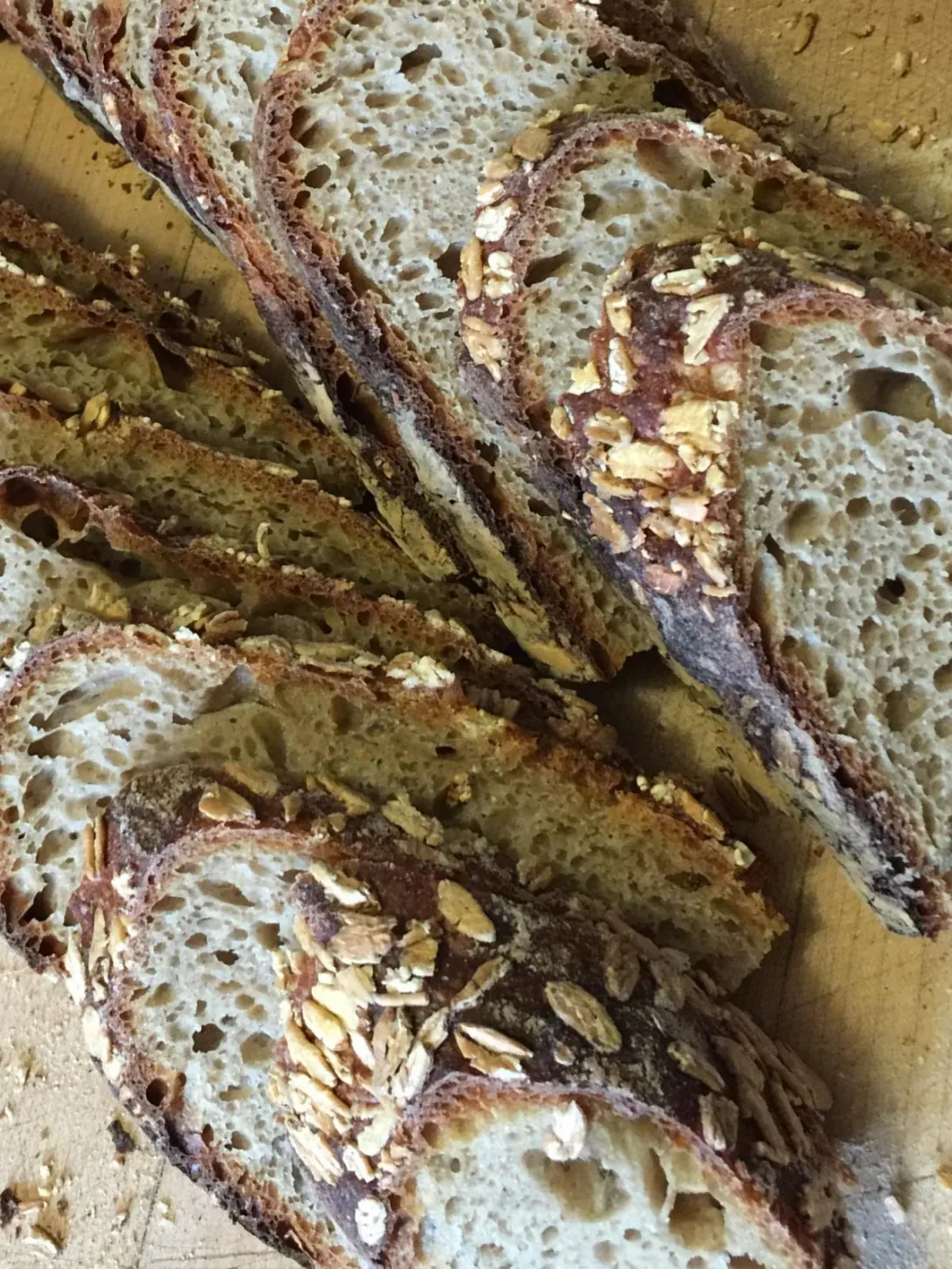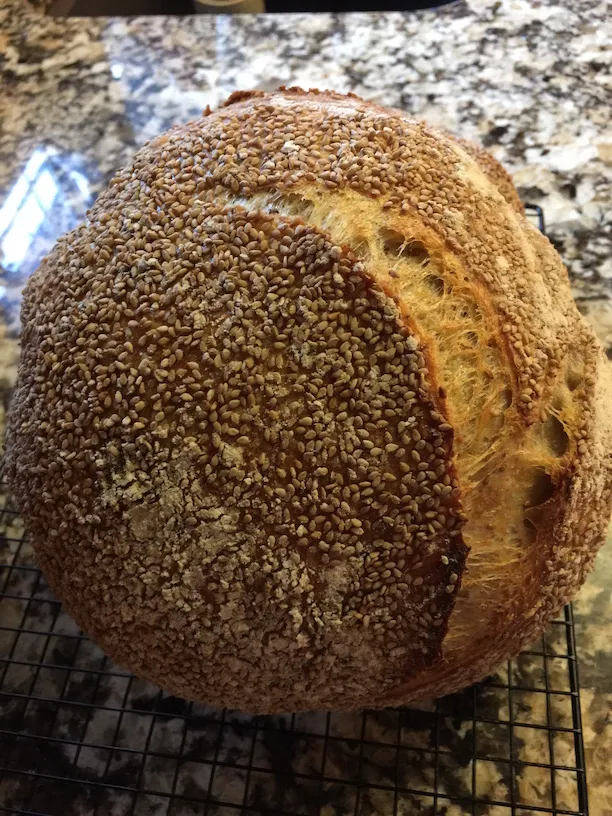Honeyed Spelt and Oat
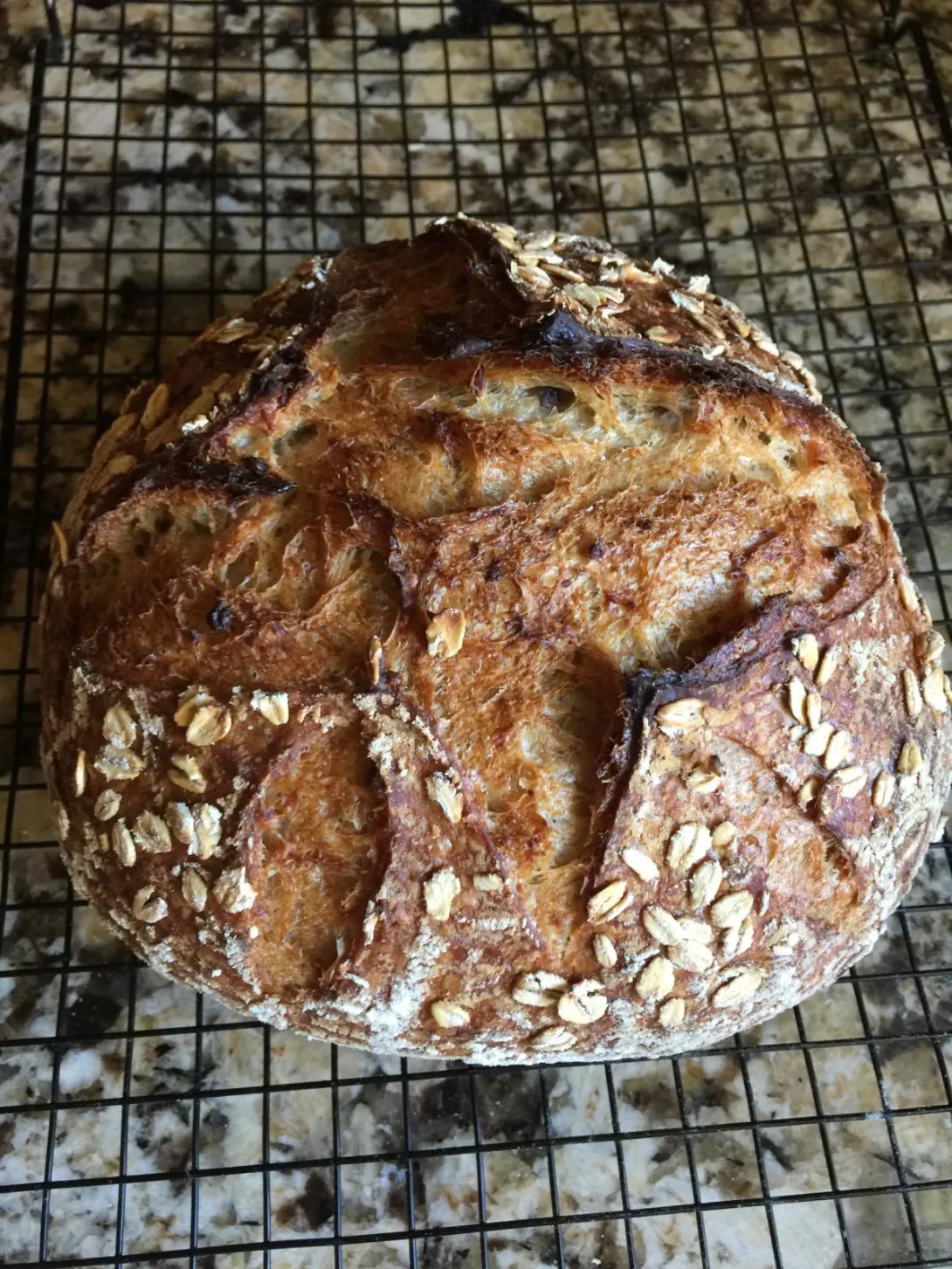
This recipe is from Sourdough: Recipes for Rustic Fermented Breads, Sweets, Savories, and More from
Sarah Owens. She won the James Beard Award for 2016 in baking books. I don't own the book but I found a copy of the recipe online.
I changed the method a bit to allow for an autolyse with just flour but the dough was really stiff and I probably should have added the oat soaker in at the same time. Anyhow, this was my method which differs a bit from the book.
1. Make levain with 40 g water, 30 g starter and 40 grams spelt. Let sit overnight.
